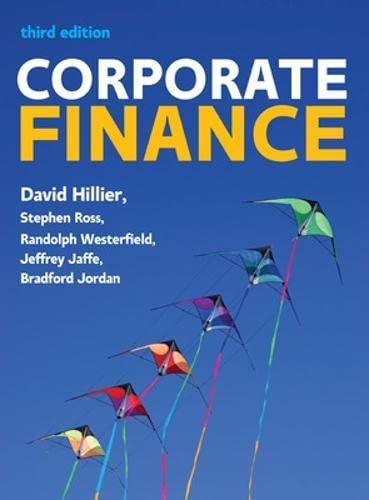An investor is said to take a position in a collar if she buys the asset, buys
Question:
An investor is said to take a position in a ‘collar’ if she buys the asset, buys an out-of-the-money put option on the asset, and sells an out-of-the-money call option on the asset. The two options should have the same time to expiration.
Suppose Marie wishes to purchase a collar on Zurich Re, a non-dividend-paying equity, with 6 months until expiration. She would like the put to have a strike price of 50 Swiss francs (SFr) and the call to have a strike price of SFr120. The current price of Zurich Re’s equity is SFr80 per share. Marie can borrow and lend at the continuously compounded risk-free rate of 10 per cent per annum, and the annual standard deviation of the equity’s return is 50 per cent. Use the Black–Scholes model to calculate the total cost of the collar that Marie is interested in buying. What is the effect of the collar?
Step by Step Answer:

Corporate Finance
ISBN: 9780077173630
3rd Edition
Authors: David Hillier, Stephen A. Ross, Randolph W. Westerfield, Bradford D. Jordan, Jeffrey F. Jaffe





